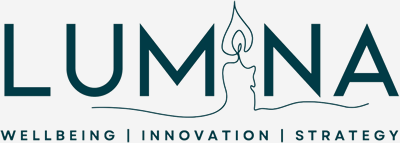The Power of Noticing: Finding Calm in the Chaos
Life can feel like a whirlwind, especially during times of significant transition. I’m currently navigating one myself—moving into a new career where I’m guiding individuals toward better mental and physical well-being, while also pursuing higher-level research to deepen my understanding in this area. With such a big shift comes the usual flurry of activity and change, and it’s easy to let the urgency of the moment consume all of our attention.
Amidst this whirlwind, though, I’m reminded of the power in slowing down and noticing the “noticings” around us—those small, often-overlooked moments of beauty and reflection that ground us, no matter how chaotic things get. In fact, more often than not, I’m forced to slow down—my body and mind tell me it’s time to stop.
In my workshops, I often talk about “noticing,” a practice a close friend introduced to me during my recovery. These “noticings” aren’t grand gestures; they’re the subtle, everyday details that add meaning and richness to our lives. The cracked tile that hints at a home’s history, the missing step I fixed with my own hands, the gentle hum of wasps in the garden—all these imperfections become part of the unique charm of my new surroundings.
The magic of these “noticings” extend far beyond the physical environment. It’s the breathtaking view that stops me in my tracks each morning, the symphony of birds welcoming the dawn, or even the simple pleasure of my morning coffee. These small moments of stillness bring me back to the present.
In our rush to keep up with life’s demands—whether it’s deadlines, to-do lists, or the overwhelming nature of new roles and responsibilities—it’s all too easy to miss these wonders. But within that whirlwind lies an opportunity: the chance to pause, breathe, and simply notice. As leaders, whether in business or education, it’s essential to model this behaviour for those we lead. When we demonstrate the ability to step back, reflect, and find moments of clarity amidst the chaos, we not only improve our own well-being but create a culture where others feel empowered to do the same. Leadership isn’t just about driving forward; it’s about knowing when to pause and take stock of the bigger picture.
When I take the time to pause, I find moments of reflection. These pauses help me make sense of the bigger picture, a picture that reminds me I’m part of something much larger than myself. In these moments of stillness, I see the beauty surrounding me and recognise the blessings hidden in plain sight. It’s through this intentional noticing that we foster gratitude and wonder for the world around us.
The older I get, the more I see how easy it is to lose this perspective. As responsibilities pile up—work, study, personal life—it becomes second nature to slip into anxiety or frustration. I know I’m not alone in this. We’ve all had moments where the busyness of life takes over, leaving us spinning. But it’s essential to take a step back, to disconnect, so we can reconnect with what truly matters.
As someone working in the space of well-being, I’ve learned that true fulfilment doesn’t come from relentless achievement—it comes from being present. My research into well-being and leadership has deepened my appreciation for these moments of stillness. It’s clear that taking time to pause not only benefits our mental health but enhances our ability to connect meaningfully with others—something I now prioritise more than ever in my work and studies. In fact, noticing these moments makes us better leaders.
That’s why I’m intentional about encouraging my clients—and myself—to embrace downtime. It’s not always easy, and I’ve met resistance along the way, but I’m living proof of the benefits. Learning to switch off and recharge has made a profound difference in my life, and it’s something I practice regularly.
As professionals, especially those of us working in fields like education or well-being, it’s crucial to remember that relationships are at the heart of what we do. Frameworks, programmes, and techniques may be important, but real impact comes from human connection—whether that’s the connection between teacher and student, mentor and mentee, or even coach and client.
So, I challenge myself and my peers to adopt a new approach—one that values human connection alongside rigorous work. Let’s prioritise stillness and reflection over constant motion. Let’s allow the small moments—the noticings—to remind us of the joy, peace, and connection that are always within reach. These moments not only help us stay balanced but also improve our mental health and well-being.
Three Simple Ways to Notice
Start your day with a mindful pause – Before diving into your morning routine, take a moment to simply sit in stillness and notice the sounds, sights, and sensations around you.
Schedule ‘pause breaks’ – Throughout your day, set a few reminders to pause for 2-3 minutes. During these breaks, tune into what’s around you: the rustling of leaves outside, a cup of tea in hand, or even the rhythm of your own breathing.
Gratitude journaling – At the end of the day, reflect on at least three small things you “noticed.” This practice helps reinforce the habit of being present and mindful.
Even when life feels uncertain, or when the ground beneath us is shifting, holding onto these tiny sparks of joy keeps us grounded. Take a breath, look around, and embrace the moments of peace and happiness—no matter how small. These noticings are the embers that keep us warm, the wellspring that nourishes us, and the reminder of life’s beauty in its simplest form.
Take time to ‘notice’ this week. It will be hard at first. Trust me I know. Have a great week and reach out if you would like to work with or just have a chat.
